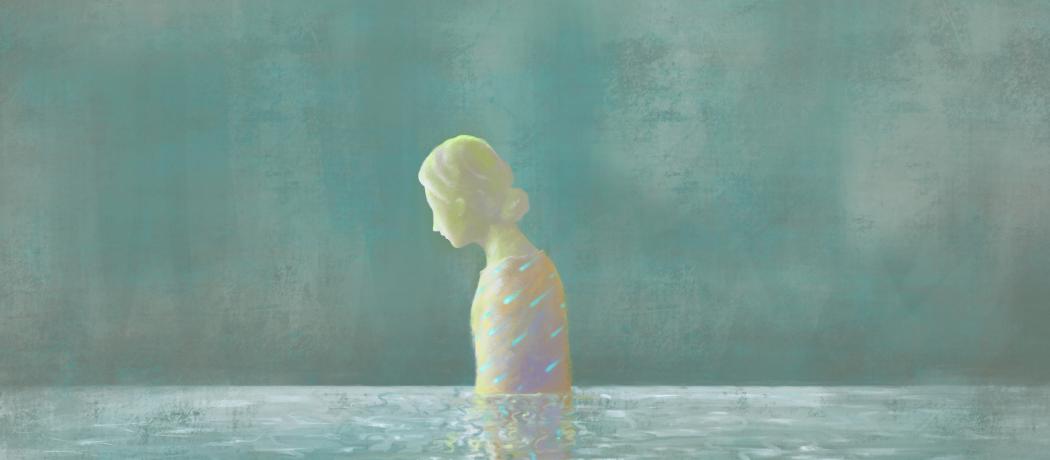I have never been much of a runner, let alone a long-distance runner. Still, the title of Alan Sillitoe’s rather sad short story, “The Loneliness of the Long-Distance Runner,” has become a metaphor for my current mental state. I am the runner at my wife’s side as she sinks into deep dementia. The long distance is the 7 or 8 long years of my run so far, and the loneliness is the painful feeling of the loss of my intimate other. It is hard to describe this feeling because it is not constant. It is a form of sadness, yet I don’t feel self-piteous or depressed. My loneliness is a longing for the easy connectedness through sharing all aspects of ourselves.
My wife is being taken care of at home by loving caregivers. The very personal feelings of loneliness crystallized in my mind when I recently learned about a friend’s mother dying in utter loneliness, without family present, in a nursing home governed by pandemic visiting rules.
Loneliness has not been a much-studied aspect of our lives. In English literature before the 17th century loneliness was an uncommon word. Later it referred to being alone in lonely places where someone might do you harm. Since the 18th century it has become identified as an emotional state, a feeling of being apart from others without that being so. Currently at least three types of loneliness are identified:
• Emotional loneliness related to the lack or loss of an intimate other.
• Social loneliness to do with feelings of being unconnected to friends, family, or neighbors.
• Existential loneliness related to feelings of emptiness and longing for a meaning or purpose in life.
The current social isolation related to the pandemic, with its no-visitors policy in our hospitals and nursing homes, has turned considerable attention to the psychological, social, and medical aspects of loneliness. Scientifically renamed as a state of perceived social isolation (PSI), loneliness is now becoming identified as a biological state that has specific effects on health and mortality. Etiologically, the focus is on breaks in the continuum that starts with the mother-child relationship, which serves as the beginning of a lifelong unfolding of one-to-one social and sexual relationships, various group relationships, and life situations. Fractures in these relationships may occur due to health problems, disabilities, social discriminations, separation from partners, poverty, aging, or death. A break may lead to a biological state of loneliness. There are now pathological linkages identified between the experience of loneliness and physiology.
PSI has been implicated as a predictor of cardiovascular issues like hypertension, coronary artery disease, and cardiac failure. It has been related to abnormal activity of the hypothalamic pituitary-adrenocortical axis. Higher urine levels of cortisol have been measured in nonpsychotic psychiatric patients reporting symptoms of loneliness, and elevated salivary cortisol levels were found in chronically lonely undergraduate students. Psychological and behavioral effects of PSI have included depression and suicidal ideation. PSI in the elderly has been linked to cognitive deficits and later dementia.
The exact nature of the pathophysiology of these problems is still not clear, but a message is already written on the wall. People experiencing ongoing loneliness in various circumstances and at any age need attention. This may be societal, social, economic, administrative, public health, or specific nursing or medical support in any mix. Given the current pandemic, priority attention and assistance must be given to those isolated in nursing homes or chronic care settings. No-visitor policies make our health care facilities into the loneliest places of existence. Technical and administrative solutions are available to prevent contagion by visitors. These may be complex and expensive, but we are considering the lives of our loved ones.
—George Szasz, CM, MD
Suggested reading
Bhatti AB, Hag A. The pathophysiology of perceived social isolation: Effects on health and mortality. Cureus 2017;9:e994.
Killam K. To combat loneliness, promote social health. Scientific American. 23 January 2018. Accessed 5 October 2020. www.scientificamerican.com/article/to-combat-loneliness-promote-social-h....
Marshall JL. No-visitor policies are bad medicine. Medscape. 24 August 2020. Accessed 5 October 2020. www.medscape.com/viewarticle/934979.
McGraw JG. Longing and the phenomenon of loneliness. In: Tymieniecka AT. (eds) Life Creative Mimesis of Emotion. Analecta Husserliana (The Yearbook of Phenomenological Research), vol 62. Springer, Dordrecht. doi: https://doi.org/10.1007/978-94-011-4265-6_4
Walker H. The perils of loneliness in the time of Covid-19. The Spinoff. 14 April 2020. Accessed 5 October 2020. https://thespinoff.co.nz/society/14-04-2020/the-perils-of-loneliness-in-....
Worsley AS. A history of loneliness. The Conversation. 19 March 2018. Accessed 5 October 2020. https://theconversation.com/a-history-of-loneliness-91542.
This post has not been peer reviewed by the BCMJ Editorial Board.


Such a poignant and informative description of loneliness. Thank you